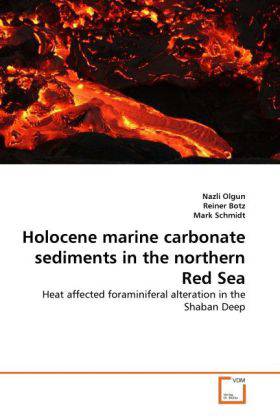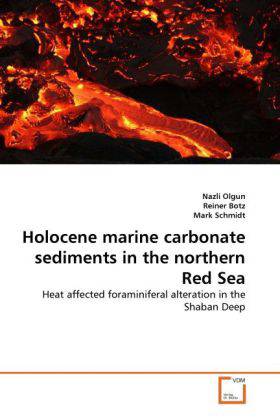
- Afhalen na 1 uur in een winkel met voorraad
- Gratis thuislevering in België vanaf € 30
- Ruim aanbod met 7 miljoen producten
- Afhalen na 1 uur in een winkel met voorraad
- Gratis thuislevering in België vanaf € 30
- Ruim aanbod met 7 miljoen producten
Zoeken
Holocene marine carbonate sediments in the northern Red Sea
Nazli Olgun, Reiner Botz, Mark Schmidt
Paperback | Engels
€ 48,45
+ 96 punten
Omschrijving
The Red Sea, one of the warmest and saltiest water bodies in the world, is a recent example for ocean basin formation by break of a continent, which makes it a perfect study area to investigate the early stage of the formation of an ocean basin (e.g. magma intrusion). This book provides new data of the two sediment cores from the Shaban Deep in the northern Red Sea. Although the two cores are located about a kilometer distance, distinctly different isotopic and geochemical signals were observed. Compared to the usual stable oxygen isotope (δ18O) signatures of planktonic foraminifera in the Red Sea, a strong negative δ18O shift was seen in the core 17008-1. The planktonic foraminifera shells below 183 cm core depth, showed high degrees of diagenetic alteration. This alteration has not been caused by a hydrothermal input, but rather dominated by post-depositional alteration through hot pore-waters. The heat source is most likely to be basaltic intrusion occurred before 6 ka, and located close to the core 17008-1. These results will shed light on the geological construction of the Red Sea area as well as for investigating the hydrothermal activity and ore formation in the region.
Specificaties
Betrokkenen
- Auteur(s):
- Uitgeverij:
Inhoud
- Aantal bladzijden:
- 92
- Taal:
- Engels
Eigenschappen
- Productcode (EAN):
- 9783639277760
- Verschijningsdatum:
- 1/09/2010
- Uitvoering:
- Paperback
- Formaat:
- Trade paperback (VS)
- Afmetingen:
- 152 mm x 229 mm
- Gewicht:
- 145 g

Alleen bij Standaard Boekhandel
+ 96 punten op je klantenkaart van Standaard Boekhandel
Beoordelingen
We publiceren alleen reviews die voldoen aan de voorwaarden voor reviews. Bekijk onze voorwaarden voor reviews.











